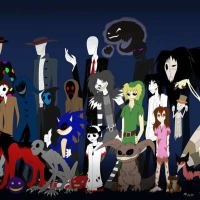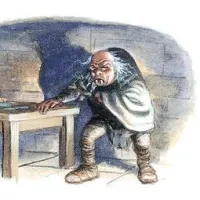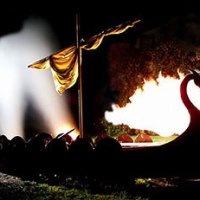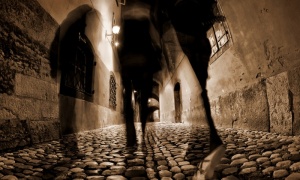Are you a fan of spooky tales and things that go bump in the night? If so, then you’re probably familiar with the story of Dr. Jekyll and Mr. Hyde. But did you know that this haunting tale was actually based on a real-life person?
That’s right, the character of Dr. Jekyll was inspired by a man named William Brodie, a respected businessman by day and a notorious criminal by night. Brodie was a master locksmith who used his skills to break into the homes of wealthy Edinburgh residents and steal their valuables. But what’s even more shocking is that Brodie was also a member of Edinburgh’s city council and a respected member of society.
Just like Dr. Jekyll, Brodie lived a double life, one of respectability and one of crime. And like Jekyll, Brodie’s story didn’t end so well. He was eventually caught and hanged for his crimes in 1788.
“The Strange Case of Dr. Jekyll and Mr. Hyde” by Robert Louis Stevenson is a classic tale of duality, good versus evil, and the dangers of mixing chemicals in your basement. The story follows Dr. Jekyll, a respected physician with a dark secret. He creates a potion that transforms him into his evil alter ego, Mr. Hyde.
At first, Jekyll enjoys the freedom that his transformation affords him. He can indulge in all of his most base desires without fear of consequence. But soon, the transformations become more frequent and uncontrollable, and Jekyll realizes that he is losing control of his own mind.
The story is a cautionary tale about the dangers of giving in to our darker impulses. It’s also a warning against DIY chemistry experiments. Seriously, kids, don’t try this at home.
One of the most fascinating aspects of “Dr. Jekyll and Mr. Hyde” is the way it reflects the anxieties of its time. The Victorian era was a time of great social change, and people were grappling with the idea that there might be a dark side to human nature. Stevenson’s story taps into those fears and explores the idea that we are all capable of evil.
Of course, the story has also been adapted and interpreted in countless ways over the years. There have been stage plays, movies, TV shows, and even a musical. So if you’re looking for a spooky, thought-provoking tale that has stood the test of time, “The Strange Case of Dr. Jekyll and Mr. Hyde” is definitely worth a read. Just remember to keep your chemistry experiments in the lab where they belong.
Read on for more…
I had always been fascinated by the story of Dr. Jekyll and Mr. Hyde. It was the perfect embodiment of the idea that every person has a dark side, waiting to be unleashed. Little did I know that the story was based on something far more sinister.
One dark and stormy night, I found myself wandering the streets of Edinburgh. The city was shrouded in mist, and I felt as if I was walking through a ghostly dream. As I turned a corner, I saw a figure lurking in the shadows. It was a man, tall and thin, with a twisted smile on his face.
“Hello there,” he said, his voice low and gravelly. “Do you want to hear a story?”
I hesitated for a moment, but my curiosity got the better of me. “Sure,” I said. “What kind of story?”
“A story about a man who had a secret,” the man replied. “A man who lived a double life, just like Dr. Jekyll.”
He led me to an old tavern, where we sat down at a table in the corner. The man ordered us a round of drinks, and then began his tale.
“It was many years ago, in this very city,” he said. “There was a man named William Brodie, a respected businessman by day, but a notorious criminal by night. He was a master locksmith who used his skills to break into the homes of wealthy Edinburgh residents and steal their valuables.”
I listened in rapt attention as the man told me the story of Brodie, his secret life of crime, and his eventual downfall. When he finished, he looked at me with a twisted smile.
“Do you know what’s really scary?” he said. “The fact that there are still people like Brodie out there. People who live double lives, who have secrets that they’ll take to the grave.”
And with that, he disappeared into the night, leaving me alone with my thoughts and a creeping sense of unease. As I walked back to my hotel, I couldn’t shake the feeling that there was something sinister lurking in the shadows, waiting to be unleashed.
Robert Louis Stevenson’s “The Strange Case of Dr. Jekyll and Mr. Hyde” is one of the most famous and enduring works of English supernatural fiction. First published in 1886, the novella tells the story of a respected physician, Dr. Jekyll, who creates a potion that unleashes his evil alter ego, Mr. Hyde. The tale has been interpreted in countless ways over the years, but what was the story actually based on?
The inspiration for “Dr. Jekyll and Mr. Hyde” can be traced back to Stevenson’s personal life and the culture of his time. At the time of writing the story, the Victorians were obsessed with the idea of duality – the idea that every person has a good and evil side. Stevenson, who was fascinated by this concept, began to imagine what would happen if these two sides were physically separated, leading to the creation of the character of Dr. Jekyll.
The character of Dr. Jekyll is the embodiment of the Victorian ideal of the gentleman: respectable, educated, and in control of his impulses. However, as the story unfolds, we see that Jekyll is not as in control as he appears. His alter ego, Mr. Hyde, represents his darker desires, and the freedom that comes with abandoning social constraints.
The story serves as a warning about the dangers of indulging in our darker impulses. Jekyll’s desire for freedom and lack of control over his darker impulses leads to his downfall. The story shows that even the most respectable and educated person is capable of evil, and that the consequences of giving in to our darker desires can be catastrophic.
During the Victorian era, there was a growing awareness of the darker side of human nature. The belief that people were inherently good was being challenged by the increasing crime rates and social unrest. The concept of duality, or the idea that every person has a good and evil side, became a popular topic of discussion. “Dr. Jekyll and Mr. Hyde” reflected these anxieties and tapped into the fear that we all have the potential for evil within us.
The story also reflects the Victorian obsession with science and progress. The idea of using science to improve society was becoming more and more popular, but there was also a fear that unchecked scientific progress could have dangerous consequences. Stevenson’s story uses the character of Dr. Jekyll, a scientist who experiments with chemicals to separate his good and evil sides, to explore this theme. The story shows the dangers of playing with science without considering the ethical implications, and the consequences that can arise when we try to tamper with the natural order.
“Dr. Jekyll and Mr. Hyde” can also be seen as a commentary on the social norms of the Victorian era. The strict codes of behavior and morality that governed society at the time could be suffocating, and there was a desire to break free from these constraints. The character of Mr. Hyde represents the desire for freedom and the ability to indulge in our darker impulses without fear of consequences. However, the story also shows that breaking free from these constraints can lead to chaos and destruction, highlighting the importance of social order and morality.
“Dr. Jekyll and Mr. Hyde” is a complex and thought-provoking story that reflects the anxieties and concerns of its time. It continues to captivate readers today because of its exploration of timeless themes such as the duality of human nature, the dangers of unchecked scientific progress, and the struggle between personal freedom and social order.
Despite being a cautionary tale, “The Strange Case of Dr. Jekyll and Mr. Hyde” has endured as a classic story of horror and suspense. Its exploration of the duality of human nature and the struggle between good and evil continues to captivate readers today. The character of Mr. Hyde has become an icon of horror, representing the dark side of human nature that we all fear and hope to keep under control.
One of the most famous adaptations of “The Strange Case of Dr. Jekyll and Mr. Hyde” is the 1931 film starring Fredric March. This classic horror movie is a faithful adaptation of the novel and helped to cement Mr. Hyde’s place in popular culture as a terrifying and unforgettable character. The film also highlights the importance of careful casting, with March’s performance earning him an Academy Award for Best Actor.
In recent years, there have been many modern adaptations of the story that explore the themes in new and innovative ways. For example, the TV show “Penny Dreadful” featured a character named Dr. Jekyll who is portrayed as a mixed-race man struggling to control his darker impulses in the face of the prejudice of the Victorian era. This adaptation highlights the continued relevance of the story’s themes of duality and the struggle for personal identity.
The musical adaptation “Jekyll & Hyde” brought the story to the Broadway stage, complete with haunting ballads and soaring anthems. While the musical takes some liberties with the original plot, it still captures the essence of the story and the struggle between good and evil. The musical has been performed around the world and has even been adapted into a film.
“The Strange Case of Dr. Jekyll and Mr. Hyde” has been adapted and interpreted in countless ways over the years, reflecting the enduring fascination with the story’s themes of duality, the struggle for personal identity, and the consequences of indulging in our darker impulses. Whether you prefer the original novel, the classic horror film, or a modern retelling, the story continues to captivate audiences today and serves as a timeless cautionary tale.

















Leave a comment